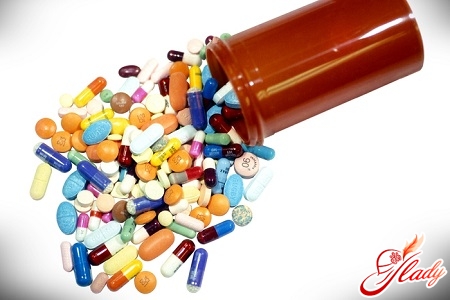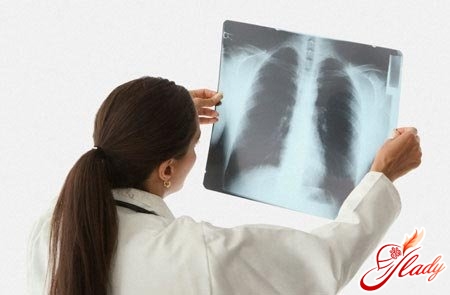
It is well known that almost everyonethe drug has side effects that have a harmful effect on the liver. Since the liver acts as a natural filter of the whole body, poisons can accumulate in using it in a large number of drugs, thereby causing toxic or drug-induced hepatitis.
Medicinal Hepatitis: the causes of
This is an inflammatory liver disease,arising as a result of taking certain medications. It in 1-28% of cases significantly complicates the ongoing pharmacotherapy and in 12-25% of cases leads to the development of hepatic insufficiency and cirrhosis of the liver. Medicated hepatitis is 2-3 times more common in women than in men. A total of 2-10% of hospitalized patients develop drug-induced hepatitis of varying severity. In elderly people, the susceptibility to hepatotoxic action of drugs increases. This is due primarily to a decrease in the intensity of hepatic blood flow and liver volume. The risk of the disease with medicinal hepatitis increases with liver damage of various etiologies, as well as in the case of a decrease in kidney function. The decisive role in the development of medical hepatitis is played by the sensitivity of a person to a specific medicine, it is determined by a number of factors:
- genetic features of the human body(for example, if one of the parents suffered from hepatitis due to taking the medicine, then the likelihood that the same reaction will be in the child is also quite large);
- the state of the liver at the time of taking the medicine (in patients with chronic hepatitis, especially the toxic effect of drugs);
- combining drugs or medicines andpoisonous substances. In the case of simultaneous use of 2 or more drugs, the toxic effect of drugs is enhanced, or if the patient is exposed to toxic substances (poisonous gases, solvents, alcohol, etc.) against the background of treatment.

What medications can lead to the development of the disease?
Almost any medication cancontribute to the development of medicinal hepatitis. Its development depends on the individual characteristics of the organism, the properties of the particular medicinal product, the dosage of the drug, the duration of its administration, and the number of drugs simultaneously taken by a human. Most of the risk for the development of drug-induced liver damage is observed in pregnant women, in people who do not consume enough protein foods (for example, vegetarians or people with limited financial resources), with prolonged stress, and with severe diseases of other organs (kidney failure, severe heart failure, etc.) There are some groups of drugs that cause the development of the disease more often than others. These include:
- anti-tuberculosis drugs (Rifampicin, Isoniazid);
- antibiotics from the tetracycline group (Doxycycline, Tetracycline, Chlortetracycline, etc.), penicillins (Benzylpenicillin, Amoxicillin, etc.), macrolides (Erythromycin);
- hormonal drugs (sex hormones, oral contraceptives, retabolil, etc.);
- non-steroidal anti-inflammatory drugs (Diclofenac, Aspirin, etc.);
- anticonvulsant, antiepileptic drugs (phenytoin, clonazepam, carbamazepine, etc.);
- antiulcer drugs (omeprazole);
- antidiabetic drugs;
- sulfonamides (Biseptol, Cotrimoxazole, Sulfadimethoxin, etc.);
- diuretics (Hypothiazide, Furosemide, etc.);
- antiarrhythmic drugs (Amiodarone);
- cytostatics (Cyclosporin A and others).
Before starting any medication, you should carefully read the instructions for its use and be careful about the onset of symptoms of the disease.
How rapidly does drug hepatitis develop?
Currently, all medicinal hepatitises are divided into 2 groups:
- direct toxic effects, it is known, predictable and taken into account in the drug treatment of patients;
- indirect impact, which is associated with increased sensitivity of patients, and is unpredictable.
By the nature of the disease, the disease happenschronic and acute. Acute drug hepatitis develops after taking drugs about a week later and is rare. Usually, it occurs with individual drug intolerance and direct exposure to drugs. Chronic drug-induced hepatitis usually develops gradually, and the clinical picture is similar to all existing liver diseases. The time of development of this form of the disease ranges from several months to several years. The danger of chronic drug hepatitis is that it can flow without symptoms, without changing the color of the skin. If the patient stops taking medication, usually even minor symptoms disappear. It is impossible to determine exactly when the onset of drug-induced hepatitis occurs. In some cases, drug damage to the liver develops after a long-term intake of a drug, in other cases, the disease can develop in a few hours or days after the start of therapy. The most complex form of drug damage to the liver is acute massive necrosis, that is, death of liver tissue due to exposure to toxic substances. Acute massive necrosis of the liver develops quickly enough and early leads to liver failure and cirrhosis of the liver. The most serious disease, similar to the drug hepatitis, is Reye's syndrome, it occurs in children who took aspirin during acute viral infections. As a rule, the abolition of the medication leads to the restoration of liver functions and the recovery of a person. Chronic medicamentous hepatitis occurs in patients who are forced to use certain drugs for a long time (anti-tuberculosis, anticonvulsant, antidiabetic, anti-inflammatory drugs). 
Symptoms and signs of drug-induced hepatitis
The disease has symptoms that are typical for almost all types of hepatitis:
- vomiting, nausea, belching with bitter aftertaste, decreased appetite, stool disorders (diarrhea, constipation), weight loss;
- an increase in the size of the spleen and liver;
- jaundice - yellowing of the skin of the body, mucous membrane of the mouth, sclera of the eyes;
- feeling of heaviness, pain, discomfort in the right hypochondrium;
- darkening of urine, clarification of feces;
- itching with subsequent brushes.
Because the symptoms of all types of hepatitissimilar, relying only on them, clarify the nature of hepatitis can not. If you have similar symptoms, you need to see a doctor who, having assigned the necessary studies, will put an accurate diagnosis. Diagnosis and research with drug-induced hepatitis
- general analysis of urine and blood;
- biochemical analysis of blood with determination of protein fractions, bilirubin and its fractions, AST and ALT;
- coagulogram - a study of the blood coagulation system;
- Ultrasound of the abdominal cavity organs.
If this disease is suspected,to make a biochemical analysis of blood, which determines the increase in the level of transaminases (ASAT, ALAT) - liver enzymes, indicating its damage. Increased transaminase levels are usually the earliest sign of liver damage and precede the onset of symptoms. Thus, patients who are forced to take medications for a long time should regularly check the level of transaminases in the blood to detect drug-induced hepatitis at an early stage. It is difficult to determine the real cause of hepatitis when symptomatic symptoms occur. However, the abolition of therapy with a drug that caused hepatitis, and further improvement in the patient's condition, clarify the situation. When the condition improves, the medication is prescribed again and the liver is monitored. If the condition worsens after re-prescribing the drug, we can confidently speak of drug-induced hepatitis.
Treatment of medical hepatitis
This disease is quite dangerous,which without proper treatment can quickly pass into cirrhosis of the liver and cause liver failure. Treatment of medical hepatitis should be under the supervision of the attending physician. Treatment consists of several stages:
- cancellation of the medicine that causedmedicamentous liver disease. The withdrawal of the medicine that caused the development of the disease must necessarily be agreed with the attending physician. He will assess the degree of risk with the cancellation of this medication and, if necessary, prescribe another drug;
- carrying out detoxication therapy - removalfrom the blood of toxic substances damaging the liver. As a rule, detoxification therapy includes droppers with blood purifying preparations (for example, haemodesis);
- after that it is necessary to carry out a restoringtherapy. This is done with the help of hepatoprotectors, which improve metabolism in the liver cells. These include drugs such as Essentiale forte, Heptral, Methionine, etc .;
- the conduct of symptomatic therapy (according to indications).
When taking medications with a pronouncedhepatotoxic effect, hepatoprotectors are prescribed from the first days of therapy with a toxic drug and until the end of the use of this medication. This principle of treatment helps to prevent the onset of the disease and makes it possible to carry out the necessary treatment (for example, with tuberculosis). With this disease, treatment should be carried out while following a strict diet. With drug-induced hepatitis, a "Table No. 5" diet is recommended, which is prescribed to all liver patients. It includes:
- limiting intake of spicy, fried and fatty foods;
- fractional food;
- complete exclusion from the diet of alcohol;
- eating foods high in carbohydrates;
- additional cellular nutrition (vitamins, amino acids, minerals).
In the prevention of drug-induced hepatitisit is important to monitor the liver during the therapy. For this, the level of liver enzymes is monitored weekly. After discharge, enzyme control must be performed every month.









